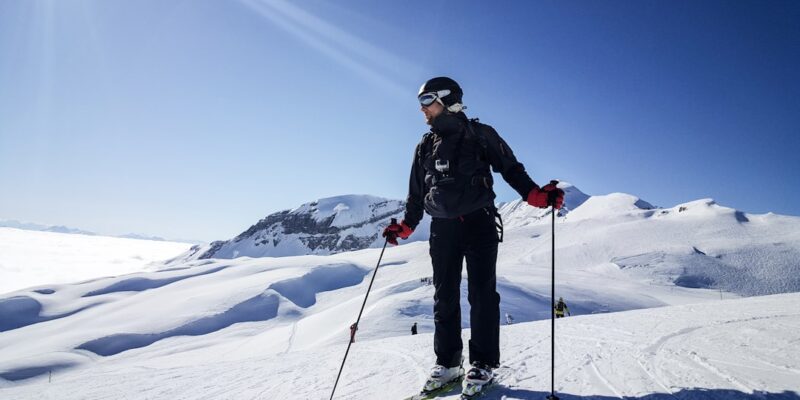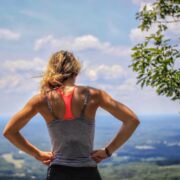
Get Slope-Ready: Fitness Prep for Skiing & Snowboarding
Skiing and snowboarding are exhilarating winter sports that require a certain level of physical fitness to fully enjoy and excel at. Fitness preparation is essential for these activities as it not only enhances performance but also reduces the risk of injuries. Whether you are a beginner or an experienced skier or snowboarder, taking the time to get slope-ready can make a significant difference in your overall experience on the slopes.
Key Takeaways
- Fitness prep is essential for skiing and snowboarding to prevent injuries and improve performance.
- Getting slope-ready has numerous benefits, including increased confidence and enjoyment on the slopes.
- Skiing and snowboarding require significant physical demands, including endurance, stamina, balance, and control.
- Building endurance and stamina through cardio workouts and resistance training can improve performance on the slopes.
- Strengthening your core and improving flexibility through stretching can enhance balance and control while preventing injuries.
Why Fitness Prep is Essential for Skiing and Snowboarding
Being physically fit is crucial for skiing and snowboarding as it can greatly enhance your performance on the slopes. These activities require strength, endurance, balance, and flexibility, all of which can be improved through fitness preparation. Without proper fitness training, you may find yourself struggling to keep up with the demands of these sports, leading to fatigue, poor technique, and increased risk of injuries.
Not being physically prepared for skiing and snowboarding can also pose potential risks. The slopes can be challenging and unpredictable, and without adequate fitness preparation, you may find yourself more susceptible to accidents and injuries. Additionally, lack of fitness can lead to muscle imbalances and weaknesses that can affect your overall stability and control while skiing or snowboarding.
The Benefits of Getting Slope-Ready
Getting slope-ready through fitness preparation offers numerous benefits for both your performance on the slopes and your overall health and well-being. Firstly, being physically fit allows you to enjoy skiing and snowboarding to the fullest. You will have more energy, better endurance, and improved control over your movements, allowing you to tackle more challenging terrains and make the most out of your time on the slopes.
Fitness preparation for skiing and snowboarding also has positive effects on your overall health. These activities provide a full-body workout that engages various muscle groups, helping to improve cardiovascular fitness, build strength, increase flexibility, and enhance balance. Regular exercise through fitness preparation can also lead to weight loss, improved mental health, and reduced risk of chronic diseases such as heart disease and diabetes.
Understanding the Physical Demands of Skiing and Snowboarding
| Metrics | Description |
|---|---|
| Vertical Drop | The difference in elevation between the top and bottom of a ski run. |
| Run Length | The distance of a ski run from top to bottom. |
| Average Slope Angle | The average steepness of a ski run. |
| Number of Lifts | The total number of lifts available at a ski resort. |
| Number of Runs | The total number of ski runs available at a ski resort. |
| Snowfall | The amount of snow that falls at a ski resort during a season. |
| Temperature | The average temperature at a ski resort during a season. |
| Altitude | The elevation of a ski resort’s base and summit. |
| Equipment Rental Cost | The cost of renting ski or snowboard equipment at a ski resort. |
| Lift Ticket Cost | The cost of a lift ticket at a ski resort. |
To effectively prepare for skiing and snowboarding, it is important to understand the physical demands of these activities. Both skiing and snowboarding require a combination of strength, endurance, balance, and flexibility.
Skiing involves dynamic movements that engage the lower body muscles such as the quadriceps, hamstrings, glutes, and calves. It also requires core strength for stability and control. Snowboarding, on the other hand, relies heavily on the core muscles for balance and control. It also engages the leg muscles but in a different way compared to skiing.
Both skiing and snowboarding require good cardiovascular endurance as they involve continuous movement for extended periods of time. The ability to maintain stamina throughout the day is crucial for enjoying these activities without feeling fatigued.
How to Build Endurance and Stamina for the Slopes
Building endurance and stamina is essential for skiing and snowboarding as it allows you to stay on the slopes for longer periods of time without feeling exhausted. To improve endurance and stamina, it is important to engage in cardiovascular exercises such as running, cycling, swimming, or using cardio machines at the gym.
Interval training is particularly effective for building endurance. This involves alternating between high-intensity bursts of exercise and lower-intensity recovery periods. For example, you can try sprinting for 30 seconds followed by a 1-minute jog or walk. Repeat this cycle for 15-20 minutes to gradually increase your endurance over time.
In addition to cardiovascular exercises, incorporating activities that mimic the movements of skiing and snowboarding can also help improve endurance and stamina. These can include activities such as hiking, stair climbing, or using an elliptical machine with a focus on leg movements.
Strengthening Your Core for Better Balance and Control
Core strength is crucial for skiing and snowboarding as it provides stability and control during dynamic movements on the slopes. A strong core helps to maintain balance, absorb shocks, and transfer power between the upper and lower body.
To improve core strength, exercises such as planks, Russian twists, bicycle crunches, and leg raises can be incorporated into your fitness routine. Pilates and yoga are also excellent options for strengthening the core muscles while improving flexibility and balance.
The Importance of Flexibility and Stretching for Injury Prevention
Flexibility plays a vital role in skiing and snowboarding as it allows for a greater range of motion, reduces the risk of muscle strains or tears, and improves overall performance. Stretching exercises should be incorporated into your fitness routine to improve flexibility and prevent injuries.
Dynamic stretching before skiing or snowboarding can help warm up the muscles and prepare them for the demands of these activities. This can include exercises such as leg swings, arm circles, walking lunges, and torso twists.
Static stretching after skiing or snowboarding can help improve flexibility and prevent muscle tightness. Focus on stretching the major muscle groups used during these activities, such as the quadriceps, hamstrings, calves, glutes, and lower back.
Cardio Workouts to Improve Your Skiing and Snowboarding Performance
Cardiovascular fitness is essential for skiing and snowboarding as it allows you to maintain stamina throughout the day on the slopes. Engaging in regular cardio workouts can improve your cardiovascular endurance, making it easier to tackle challenging terrains and enjoy longer days on the slopes.
Activities such as running, cycling, swimming, or using cardio machines at the gym are excellent options for improving cardiovascular fitness. Aim for at least 150 minutes of moderate-intensity cardio exercise per week or 75 minutes of vigorous-intensity exercise.
Interval training can also be incorporated into your cardio workouts to simulate the stop-and-go nature of skiing and snowboarding. This involves alternating between high-intensity bursts of exercise and lower-intensity recovery periods.
Resistance Training for Stronger Legs and Better Control
Resistance training is important for skiing and snowboarding as it helps to build leg strength, improve control, and reduce the risk of injuries. Incorporating exercises that target the leg muscles into your fitness routine can greatly enhance your performance on the slopes.
Exercises such as squats, lunges, deadlifts, step-ups, and calf raises can help strengthen the leg muscles used during skiing and snowboarding. It is important to focus on proper form and gradually increase the weight or resistance as your strength improves.
Using resistance bands or performing bodyweight exercises can also be effective for building leg strength and control. These exercises can be done at home or in the gym and can target specific muscle groups such as the quadriceps, hamstrings, glutes, and calves.
Nutrition Tips for Optimal Fitness and Energy on the Slopes
Proper nutrition is essential for skiing and snowboarding as it provides the energy needed to fuel your body during these physically demanding activities. Eating a well-balanced diet that includes a variety of nutrient-rich foods can help improve energy levels, enhance performance, and aid in recovery.
Carbohydrates are the primary source of fuel for skiing and snowboarding, so it is important to include complex carbohydrates such as whole grains, fruits, vegetables, and legumes in your diet. These foods provide sustained energy and help replenish glycogen stores in the muscles.
Protein is also important for muscle repair and recovery. Include lean sources of protein such as chicken, fish, tofu, beans, and Greek yogurt in your meals and snacks.
Hydration is crucial for maintaining energy levels and preventing dehydration on the slopes. Drink plenty of water throughout the day and consider bringing a water bottle with you to stay hydrated while skiing or snowboarding.
Preparing Your Mindset for a Successful Skiing and Snowboarding Season
In addition to physical preparation, mental preparation is also important for a successful skiing and snowboarding season. Developing a positive and focused mindset can greatly enhance your performance and enjoyment on the slopes.
Visualization techniques can be helpful in mentally preparing for skiing or snowboarding. Take some time to imagine yourself successfully navigating the slopes, visualizing each turn, jump, or trick. This can help build confidence and improve your overall performance.
Setting goals for yourself can also help keep you motivated and focused. Whether it’s improving your technique, conquering a challenging slope, or trying a new trick, having specific goals can give you something to work towards and keep you motivated throughout the season.
Fitness preparation is essential for skiing and snowboarding as it enhances performance, reduces the risk of injuries, and improves overall health and well-being. Understanding the physical demands of these activities and incorporating exercises that target strength, endurance, balance, flexibility, and cardiovascular fitness can greatly enhance your performance on the slopes.
In addition to physical preparation, proper nutrition and mental preparation are also important for a successful skiing and snowboarding season. By taking the time to get slope-ready, you can fully enjoy these exhilarating winter sports while staying safe and injury-free. So start your fitness prep today and get ready for an amazing season on the slopes!
FAQs
What is skiing and snowboarding fitness preparation?
Skiing and snowboarding fitness preparation refers to the physical training and conditioning required to improve performance and reduce the risk of injury while skiing or snowboarding.
Why is fitness preparation important for skiing and snowboarding?
Fitness preparation is important for skiing and snowboarding because these activities require a high level of physical exertion and can put a lot of strain on the body. Proper fitness preparation can help reduce the risk of injury and improve overall performance.
What are some exercises that can help with skiing and snowboarding fitness preparation?
Exercises that can help with skiing and snowboarding fitness preparation include cardio exercises such as running and cycling, strength training exercises such as squats and lunges, and balance and stability exercises such as yoga and Pilates.
How long does it take to prepare for skiing and snowboarding?
The amount of time it takes to prepare for skiing and snowboarding depends on a variety of factors, including the individual’s current fitness level and the specific goals they are trying to achieve. Generally, it is recommended to start preparing at least 6-8 weeks before hitting the slopes.
What are some tips for staying safe while skiing or snowboarding?
Some tips for staying safe while skiing or snowboarding include wearing appropriate safety gear such as helmets and goggles, staying within your skill level, following the rules of the mountain, and being aware of your surroundings at all times.













